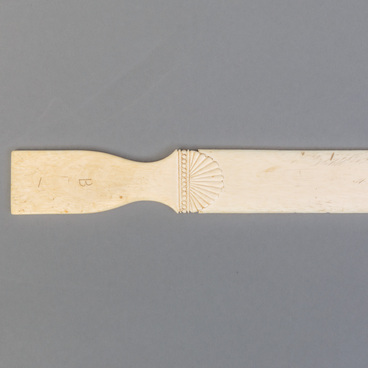Metal and wooden candelabras — candleholders with arms for several candles — were first used by the ancient Etruscans and Romans.
In ancient Egypt, ritual candleholders were made of wood, clay and reeds in the form of a smooth pole with a blossoming lotus flower on top, into which a candle was inserted. Such candleholders were a reminder of the mythological appearance of the god Ra to man and were only used in temples or noble houses. In ancient Greece candlesticks were made of red and white clay and then fired. They were coated with a layer of glaze to make them last longer and look neater.
By the 16th–17th centuries, ivory, tin, silver and bronze were also used in producing them. Renaissance artisans turned candleholders and candelabras into true works of art, decorating them with sculptures, carvings, patterns and incrustations. In the 18th century, candelabras, including those made of precious metals, decorated both halls and squares. In the following 19th century candleholders made of marble, alabaster and cast iron became popular, and somewhat later so did those, made of crystal, porcelain and colored glass.
In Russian manor houses, candelabras were an integral part of interior décor, and not only indoors, but also in the garden. Skilled craftsmen of various specialities were engaged in making candelabras: blacksmiths, glassblowers, carvers, gilders and bronzers. Such craftsmen worked both in capitals and provinces, and noble estates were to have a craftsman capable of making a candelabrum of wood or bronze.
The five-arms candelabra in the exhibition is in the Rococo style. This style came to Russia in the 18th century from France (the name comes from the French word rococo — a curl) and was eye-catching for its pretentiousness, refinement and even a certain excessiveness. Rococo items are characterized by numerous curls, cartouches (scrolls with coats of arms and monograms), rocaille (stylized seashells), images of cupids. Plant motifs such as grapevines, stylized or naturalistic acanthus leaves are very common. All these decorative elements create an atmosphere of luxury and sophistication, a dreamy and fatigued lifestyle.
In ancient Egypt, ritual candleholders were made of wood, clay and reeds in the form of a smooth pole with a blossoming lotus flower on top, into which a candle was inserted. Such candleholders were a reminder of the mythological appearance of the god Ra to man and were only used in temples or noble houses. In ancient Greece candlesticks were made of red and white clay and then fired. They were coated with a layer of glaze to make them last longer and look neater.
By the 16th–17th centuries, ivory, tin, silver and bronze were also used in producing them. Renaissance artisans turned candleholders and candelabras into true works of art, decorating them with sculptures, carvings, patterns and incrustations. In the 18th century, candelabras, including those made of precious metals, decorated both halls and squares. In the following 19th century candleholders made of marble, alabaster and cast iron became popular, and somewhat later so did those, made of crystal, porcelain and colored glass.
In Russian manor houses, candelabras were an integral part of interior décor, and not only indoors, but also in the garden. Skilled craftsmen of various specialities were engaged in making candelabras: blacksmiths, glassblowers, carvers, gilders and bronzers. Such craftsmen worked both in capitals and provinces, and noble estates were to have a craftsman capable of making a candelabrum of wood or bronze.
The five-arms candelabra in the exhibition is in the Rococo style. This style came to Russia in the 18th century from France (the name comes from the French word rococo — a curl) and was eye-catching for its pretentiousness, refinement and even a certain excessiveness. Rococo items are characterized by numerous curls, cartouches (scrolls with coats of arms and monograms), rocaille (stylized seashells), images of cupids. Plant motifs such as grapevines, stylized or naturalistic acanthus leaves are very common. All these decorative elements create an atmosphere of luxury and sophistication, a dreamy and fatigued lifestyle.





